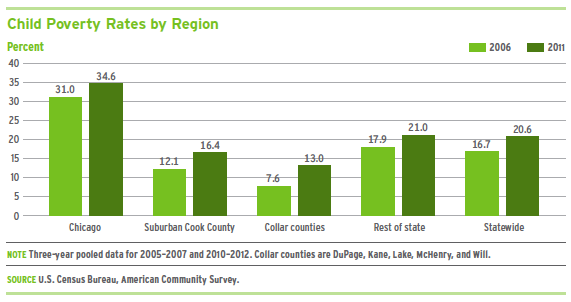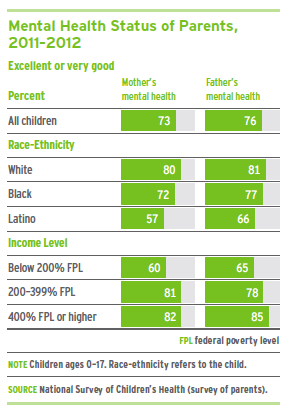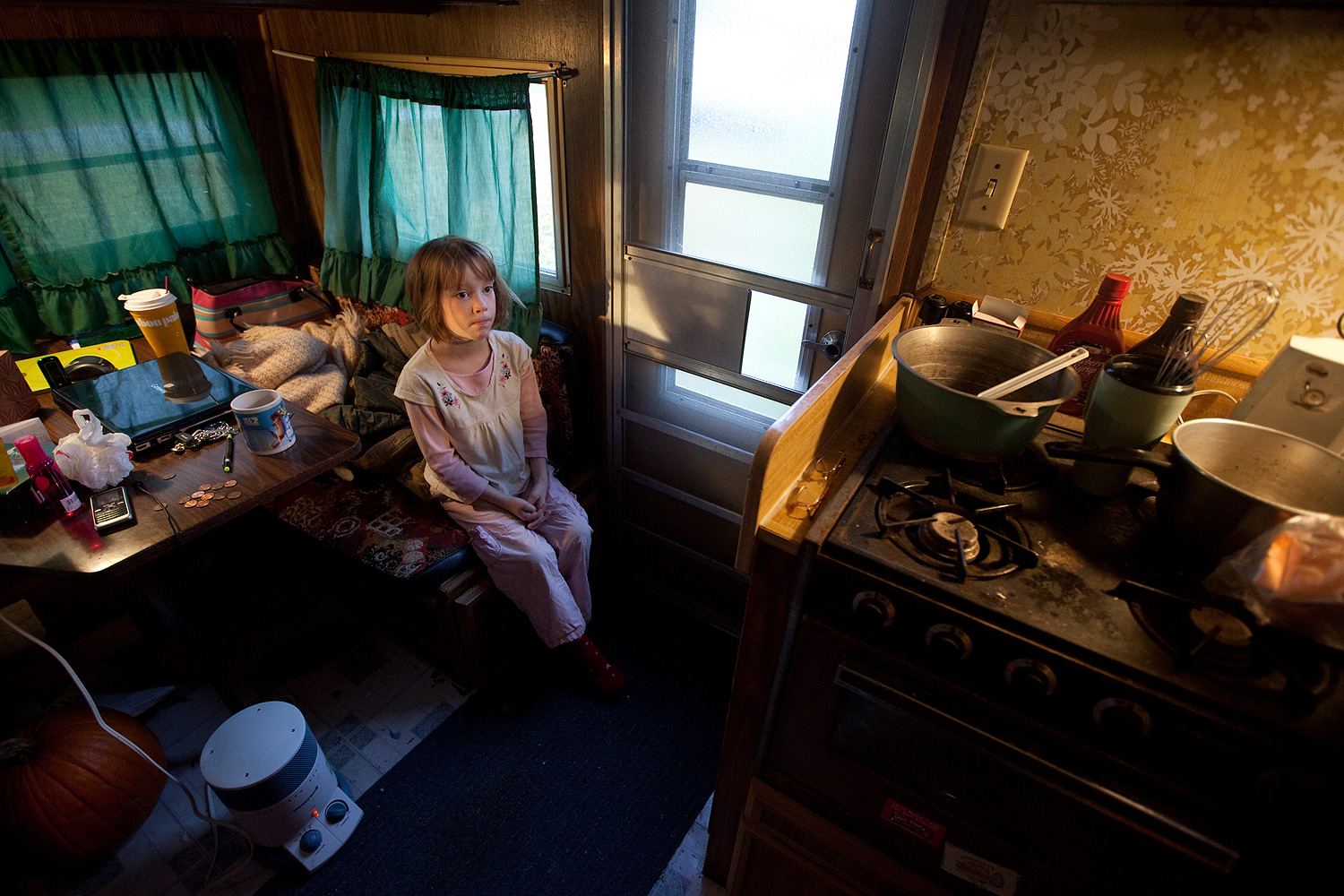One of the big developments last year in socioeconomics was news of a massive shift in poverty from the city to the suburbs—where poverty grew at more twice the rate of cities' already-substantial growth—over the past decade, particularly in the Chicago area:
The shifting poverty demographic can be seen in Chicago's suburbs, where the number of poor increased by 99 percent in the last decade — from 363,966 to 724,233, said Elizabeth Kneebone, co-author of "Confronting Suburban Poverty in America."
That was a greater increase than recorded in the New York City or Los Angeles regions, according to the book.
A new report from Voices for Illinois Children shows how child poverty followed that trend. Child-poverty rates are still considerably higher in Chicago than anywhere else, and still lower in the collar counties, but the percentage increase was greatest in the latter.

During those five years, the number of children in poverty in the collar counties increased by almost 44,000, compared to 4,000 in Chicago and 100,000 statewide: in other words, the increase in the collar counties amounted to almost half the statewide increase.
Adding more children to the poverty rolls is worrisome, in part because of a pattern that's clear in the the report: the difference in outcomes for children at 200-400 percent of the federal poverty line, and children above 400 percent, are modest, but below 200 percent there's a big difference. (And that number includes 42 percent of kids in Illinois.
Take health, for example:

Or mental health:

Or perceptions of safety:

There is some good news in the stats. The infant mortality rate in Illinois fell faster than the national average from 2000-2010 (from 8.5 percent to 6.8 percent). Lead poisoning rates for kids under six dropped drastically: in 2000 the rate in Illinois was 9.4 percent, more than twice the national average; it's now down to 1.1 percent, just 0.5 more than the national average. It's just one data point, but it's really, really important.



